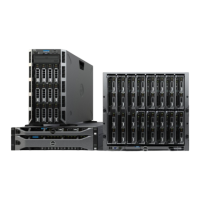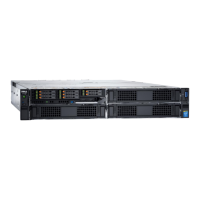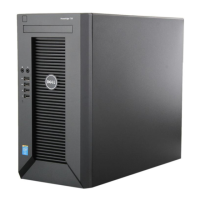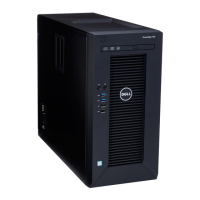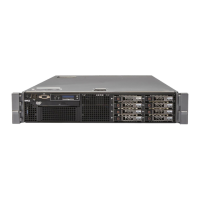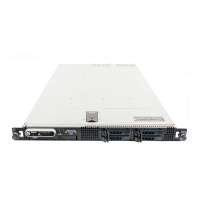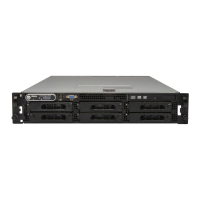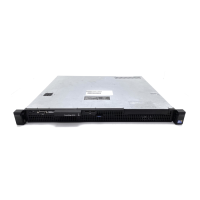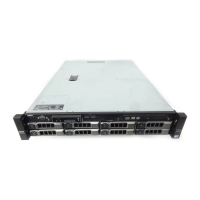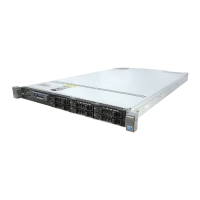







Do you have a question about the Dell poweredge VRTX and is the answer not in the manual?
Explains CMC license types, acquisition methods, and various license management operations.
Details logging into CMC with local, Active Directory, or LDAP user accounts.
Guides on how to download the latest CMC firmware from Dell's support website.
Details the process of updating CMC firmware using the Web interface or RACADM.
Provides instructions for updating server components using Lifecycle Controller.
Covers configuring CMC's IP, network settings, and DNS properties.
Covers configuring iDRAC network settings, including QuickDeploy for new servers.
Covers enabling or disabling global alerting and individual alert settings.
Details how to configure SNMP trap and email alert destinations for CMC.
Covers creating and configuring local CMC users with specific access privileges.
Details integrating CMC with Active Directory for user authentication and authorization.
Covers the process of activating the FlexAddress feature using an SD card.
Guides on configuring network settings for the I/O Module (IOM) via CMC or RACADM.
Explains CMC's power budgeting service for managing power consumption and allocation.
Covers configuring power budget, redundancy policies, and power conservation settings.
Explains CMC license types, acquisition methods, and various license management operations.
Details logging into CMC with local, Active Directory, or LDAP user accounts.
Guides on how to download the latest CMC firmware from Dell's support website.
Details the process of updating CMC firmware using the Web interface or RACADM.
Provides instructions for updating server components using Lifecycle Controller.
Covers configuring CMC's IP, network settings, and DNS properties.
Covers configuring iDRAC network settings, including QuickDeploy for new servers.
Covers enabling or disabling global alerting and individual alert settings.
Details how to configure SNMP trap and email alert destinations for CMC.
Covers creating and configuring local CMC users with specific access privileges.
Details integrating CMC with Active Directory for user authentication and authorization.
Covers the process of activating the FlexAddress feature using an SD card.
Guides on configuring network settings for the I/O Module (IOM) via CMC or RACADM.
Explains CMC's power budgeting service for managing power consumption and allocation.
Covers configuring power budget, redundancy policies, and power conservation settings.
| Compatible operating systems | Windows Server 2008 SP2 (x86/x64)\\r Windows Server 2008 R2 SP1 \\r Windows Server 2012\\r Windows Server 2012 R2\\r Novell SUSE Linux Enterprise\\r Red Hat Enterprise Linux\\r VMware vSphere ESXi |
|---|---|
| HDD speed | 10000 RPM |
| RAID levels | 0, 1, 5, 6, 10, 50, 60 |
| Data transfer rate | 6 Gbit/s |
| Storage drive size | 2.5 \ |
| Storage drive capacity | 300 GB |
| Total storage capacity | 900 GB |
| Storage drive interface | Serial Attached SCSI (SAS) |
| Storage drives installed | Yes |
| Installed storage drive type | HDD |
| Supported storage drive types | HDD & SSD |
| Total installed storage capacity | 900 TB |
| Maximum supported storage capacity | 96 TB |
| Number of storage drives installed | 3 |
| Number of storage drives supported | 25 |
| Dimensions (WxDxH) | 310 x 730 x 484 mm |
| Optical drive type | DVD+RW |
| Chassis type | Tower |
| Device class | Large Enterprise Business |
| Display type | LCD |
| Product color | Black |
| Number of fans | 6 fan(s) |
| Compatible products | PowerEdge M620 PowerEdge M520 |
| Networking standards | IEEE 802.3, IEEE 802.3ab, IEEE 802.3u |
| Linux operating systems supported | RedHat EL Linux |
| Other operating systems supported | VMware vSphere ESXi |
| Server operating systems supported | SUSE Linux Enterprise Server, Windows Server 2008, Windows Server 2008 R2, Windows Server 2008 R2 x64, Windows Server 2008 x64, Windows Server 2012, Windows Server 2012 R2, Windows Server 2012 R2 x64, Windows Server 2012 x64, Windows Server 2016, Windows Server 2016 x64 |
| AC input voltage | 100-240 V |
| 80 PLUS certification | 80 PLUS Platinum |
| Number of power supply units | 4 |
| Number of main power supplies | 2 |
| Power supply unit (PSU) capacity | 160 W |
| Host ports | 8 |
| USB 2.0 ports quantity | USB 2.0 ports have a data transmission speed of 480 Mbps, and are backwards compatible with USB 1.1 ports. You can connect all kinds of peripheral devices to them. |
| Optical drive interface | SATA |
| Cabling technology | 10/100/1000Base-T(X) |
| Ethernet interface type | Gigabit Ethernet |
| Sustainability certificates | ENERGY STAR |
| Depth | 730 mm |
|---|---|
| Width | 310 mm |
| Height | 484 mm |
| Weight | 31700 g |
